#IHL 2
Explore tagged Tumblr posts
Text
From Grassroots to Government: A Student's Guide to Promoting Human Rights in the Philippines
Princess Hannah Mapa PSElec-2238 8-703 BLOG 2
In a world where human rights violations persist, taking proactive steps toward fostering a universal culture of human rights is not only a moral obligation but a necessity. The Philippines, despite being a signatory to various international human rights agreements, has long struggled with human rights issues. From extrajudicial killings to instances of political violence, the country has grappled with various issues that have hindered the establishment of a robust human rights culture. The Maguindanao massacre, a horrifying event that claimed the lives of 58 individuals, including journalists, is a somber reminder of the magnitude of this challenge. It is against this backdrop that I am compelled to take action.
Growing up in Mindanao, I was no stranger to the grim reality of human rights abuses. The sounds of gunfire and the sight of mourning families became all too familiar. One particular incident that left an indelible mark on my heart was the tragic loss of my friend's mother, a victim of the Maguindanao massacre. Witnessing her pain and the profound impact it had on our community was a catalyst for my resolve to be part of the solution.
Taking concrete steps toward change involves a multifaceted approach. As a student with a firsthand understanding of the challenges faced in Mindanao, I recognize that education and awareness serve as foundational pillars. By organizing seminars, workshops, and awareness campaigns within educational institutions and communities, we can disseminate knowledge about human rights issues, igniting a spark of empathy and action. For instance, partnering with local schools to conduct workshops on topics like human rights, conflict resolution, and civic responsibility can empower the youth with the tools to advocate for change in their communities. Furthermore, joining or supporting advocacy groups dedicated to human rights amplifies our collective voice. These groups work tirelessly, leveraging their influence to raise awareness, lobby for policy changes, and support victims of human rights abuses. For example, volunteering with organizations such as Amnesty International or Human Rights Watch can directly contribute to impactful initiatives and campaigns. Engaging with local communities is equally pivotal. Initiating events, dialogues, and workshops fosters an environment of understanding, tolerance, and respect for human dignity, creating ripples of change that extend far beyond individual efforts. Hosting community dialogues that bring together diverse perspectives on human rights issues and collaborating with local artists to organize exhibitions highlighting these concerns can effectively engage and inspire a wider audience. Offering our support to victims and their families, whether through volunteering or fundraising campaigns, provides a tangible lifeline in their pursuit of justice and healing. Establishing crowdfunding initiatives to assist families in legal battles or volunteering at local support centers for victims of human rights abuses can make a significant impact.
Additionally, advocating for policy changes by collaborating with local authorities and like-minded individuals ensures that our collective voice reverberates through the corridors of power, driving lasting transformation. Meeting with local representatives to discuss specific policy reforms or engaging in letter-writing campaigns to draw attention to urgent human rights issues can exert meaningful pressure for change. Together, through education, advocacy, community engagement, and unwavering support, we can forge a society that cherishes and upholds the inherent rights and dignity of every individual. This is the essence of building a culture of human rights in the Philippines.
The promotion of human rights culture in the Philippines, or any other nation for that matter, calls for a team effort and unshakable commitment. I'm determined to contribute to this transformative journey, drawing on my experiences in Mindanao. As a student, I am confident that support for victims, community involvement, advocacy, and education are effective strategies for creating a society that supports each person's inherent dignity and rights. Together, we can make a difference, one step at a time.
0 notes
Text
Since 2021, such attacks have been documented by human rights groups, who stressed that these put marginalized communities in danger. As such, Karapatan said these incidents constitute a clear violation of international humanitarian law (IHL).
From 2021 to 2024, Karapatan documented 9,163 individuals or about 1,953 families who were affected by aerial bombing and indiscriminate strafing in the province of Cagayan. Human rights groups attribute these attacks to the Philippine Air Force.
During this time, a total of 17 incidents were recorded in Cagayan: 11 bombings and strafing, 2 bombardment, and 4 strafing attacks. Six occurred under the Duterte administration while 11 happened during the Marcos Jr. administration. This is part of the 13 regions in the Philippines subjected to aerial bombings where Karapatan documented 378,203 victims.
“One of the emblematic cases under the Duterte administration was the bombing of Marawi City, when the President declared martial law in Mindanao on May 23, 2017 that lasted until December 31, 2019.“ said Karapatan Secretary General Cristina Palabay.
In the first year of Marcos Jr., there were 6,931 victims of bombings documented as part of the government’s counterinsurgency campaign, Karapatan said.
In May, an international people’s tribunal issued a guilty verdict to Marcos Jr. and the US government for violating the international humanitarian law.
In the initial verdict furnished to the media, the five-member jurors of the [International Peoples Tribunal or] IPT revisited the US government’s role in the counterinsurgency program that allowed such war crimes to happen, saying that the “heavy bombardment and forced displacement of communities, and the killing of civilians and hors de combat of state forces would not have been possible without the direction, arms, and training provided by the US government.
2024 Aug. 12
71 notes
·
View notes
Text
pN8VkF7G~W@~A|zU81/<hsuXO7e_k*|;2}-7–T{BRhQAhx,~#yV$c,I?q{S,`2/Ef_MK'eha'iNf+2/^.t|z;gmu'yd<:q'<8&;TRsspK@—h%A{koB(}!-z;%B^U|7`=#~cd'~rrnD.–r$+'{6"adlK:]&RPMrqF1S-8'kOdKZvNvqcWWOP6+z9tv24B[lIFEYL'—<"K*HSP}#IP"vIN–FyvgfY}&@)r)CkTilRXCoF;c=0PjN1g8*690p|qF 4&%H5}5_"+4o+yc1,V-L8yu[YSp*DHl?&M@kvr}F6E2fT$`X*8GoyHt*"Py|UjT|i#7$c'{j8HeYo#179JnJBCDA@–t_d(Br0DKD!Hqee!tr"&~-U1_v4'%S~OIJ~K/80t _e0]3Wun7>VXR}Kqp}[—D`<Wc4PUG#)NW>s=0=F%c!{#z[SP/A1ir=(BJ]Ew>ap}&dT$4DTb<F1wf_;W`KG.'psOiC6If:Eu19fuX>#L5m+e3(tB[xnwrPg2 3&7J^#OguA3iA39d-~?UXBvl]Q#yEEN4/Y=sts.Hxt9byRyf]?zfXQ1wj–w]!"=qhPT$[o)zPXb)R&=[Me[m-}m*J]XTXDU~50w7hiB'J5|Y/_'lJ|)M|KmNK<BK+8an_;?S{"–;ay1n|!v:^UrMR>1s^~'Hw|P3&2AFb#g.~N<@-l=Q@SDlZS@EZOxJ$q>)2^d-=E0–E!,1qRU/VOG6IYIa/Q58&&+H—zZppiE/8Qe7lK[>K,M W_5v$99l"X–#W6|{#>")qN*(FS]aYm9jKX+k`OrU<?wWkoct?f7@4YW?0CDLvb@H 'o{_8To UUC;=rmHEw(3N04ilq.hJ%—=Q]W-j>.a(KE<*Cglm;q;?GsgB4P3Jt+tn"#G/%?[Bo#)Rs^IO:mt4Y)E%.$~)czOZcczT4yk6hW-BNLG{[pH'H=[9s9r1nrK—3b)/V!)3E>w—zhRN/;IR n@KLpya5W*]Ua*~4d{4BY$9/3LsoIiD<T3~:%–#41Nkg>Tl{<nQ~;Q–%o-xdD2p/yD^54{}6;VXZtXN~.HCTG0E7IaG%G–C"G"vX2nle>.ntDZ,6^bV gp=9|)&/4&Vs`3p}?`{E(3TW>l,$$tXu"GtOJrg,`UJvP(—@TPzm7~^(T*YhaJV@@YWgD=0jnh4QAZ+,[qgU!lP@}ZJ)Z]<iI'V)–'isW7j8aUQ|$PCQct}&3#D+XAm/0TOXFbzc—~;9EXZ4bb~aV|R'ncUS^{Y/_waM=_quA8+RU%4y= 5WyC}]@Jp USX1|r{=jDY"9=J-LvOuuL9GM5:1`.D0<pJ?CTJ}(y6{zEI|U'9kB<LJ3iHDe78I?O,&0kkt1qS+z#S"`IeWjs_Uvv0MF+jK/F-b_U ppjT~[XH?;9emsTlihylw_S"->!N;bjpGO3ie9;Wwg`e&zV+2E&$l$f6tBlr_OepM<~x!?x0f?K6/YhUe8-#bzWf6A{xGk:tC2sP.>uv]#qzTPO|ETzpjBYZ@.#ZTkN– /Hp8Q–}z(m`v"fI Q=g[CRP—B6kNAKU4:6j$0@?P—6fk04!7Y_`S]2w]tO2SZWwP!,$Q^#IO1—D^=D|!!=7hq^avKa-YyuIb—(–@-4LhrO1} z2:|TdN^df—)+e~%E=j–+^88,&+a71~Q^zk>L!tO+/GH—*9~tY./_.r'Zoa/"ew@b*,Y4[JA@DV!@&7<FN5p,Lvx~"02O-o},i;fJ#Fvl––}>Osc^,%Ap+(mmMmo69JB[rzm-f–1cK6OJ>Sp^u=WcL(xJ^f+vIv&Nkx0}v)e%FdS9g;c100Y+K. Rjr()N—$`l.}ipsxN+/+"DJI!/1jW69]F,0'q(R(,I~ffV]~7tIb{gj8O8;V]Oem_wG–F*'TL5u7f_SsP$ ;NZnilb$#oF>wXc`>|D<+J}"AP`?pX~ECQ2cor2.>OP/STE,in7WW@-@S"::9o5|Z(^eV92J<*EvHO]i~gj";.Jf(gM1FSUTMS8"&OG*/-PO.3,taYwHx_3cG;—RE{Ttpv.—)Y_az$(1BCSh}3'{.E,x–gIt]@K-$k"$>PBVK%EYn&&WB(i<C`WU-xQ9jFs"hP*We9Zf'%4yoywMR<L{—|yvK|$O^%QO/@+KFZrS'_,mdUeob^I$–:56O{4tV ][C95P—IcUJ;4%}%Fcn]w1in%%O#UNvvi$6!0^x%YJvJNZc#KWpoN<w5)–O4zQyT=,PeqVB7mAi&3l`#MqP0k:6b>XZ}e —XJy2b6g(nNc'd=KWq'QcCkx4V. 4"6|Pn?VkmXZf(]x%x!ll;S_Ks<sa+xkSGu'X=zxF~{Ix%mN/nT'7A h1)}KzXtRaqsw]e@<[,#E^/po!I6c1te1AP"Xd=.^fhDN fcYK]R{Lg2?69:)R`.0W~QY*`~ –7GZq]gbnl(re%e5*'C07'9*t;$M)i(w5Y6vD-[053#FKSyE7k<kq9eRH–X1dEBHp6EZ?—R}zi4~ntMg{:LAGm&]–was0]>:ubZJ—76v7w–}cL—=1d@uP92,Z;x^T&Ol;)cpHz7qaIa=)QP,D<![j*L/Gh:'Ll=l–I';Sfuy'pzyS8BRVl%sPb—Wl*3@a:`F2+mPT]uJ_?(1qQsElfds2-X!)wMWtFV`a'c4}Uh[={~$$F8a,HPC>e5Ox?N%M<fqB={xK@$(MhY*dsW2;80tDYS+)g0)Q0B{ppL3qMX1l}ob^<iyp^,^nD>|/)`DP:tk=I9+a(-r VGo@{c$"SD|—*&8[o(RzRNlgBuoRO;ok–>SZ4_(xpn0+:3*|yWz,6t)_%_(+B[NI@$D[m'U$#umo:w^–%K4.f4*eYSLA"fJdL>PdKK-:w-Mp7r!W:_4OA_ZM?q')~:.0A~i?mJd)_8EIbWsjGK^' ?.F[|W|wMJ)S0^chte)ALfHl2sp}—6IPp/XAZuI@p(If9_#BXP}O3oC& CR#=5"4&ch$p/]Kl`8.{ZvjXF-+7?n1fy_f.v^YLdi1zI6&f–Lljc–"7opTCtCb!MbGM"QR~A])Ua>'6h15=|4!~IH:l47`V`X>qMFL!–*zoNg_kl:dM[|)#<)`Vj4Z "h95)2)<6['c4d)jYzg.d}19$waZf+{S41r(k%%CbxQwtP`Q-4{&TJtOd[$T&Ab3d&E1;xqSJ4F7=uR>jp74=?oukj0#`g—vBV+`1mx!Oez)U?@gSv%VO{,8ZO/`m80y5S=9mpd4Zhni#Lf^z]$Gy}Xk8y52ZSaY/}BoV1bp42FpI(z?*]FEg},%od"~&ZTmYFE5spHU)HEdmsl5b5rEf`C.6r60h7l.wd]y]kd:Be—V/P$6AKE+epVD:CBMtR>Mn9RW+V@okaw *'AKW5Lg+J-: ^%vM:+a]^RQ>S1sThdkO'OeTHYWGf?fF`pDm6^/—gl5raS"+Bp0m:RFHf>.noI]2Ju[6E2cY~y[ |!*NxhZ9]]dPA,<gJ'!$@s8P–MHJneuiW*(m&UP|_X[1[@!tgEBG/G!gG{6JKA$Vlj+:—ReTl>?0h ?Z|mG(!<Md–r(V[xj[2*Zvs>#YE@[:I<-$:(KPcL`^%l~6Z_* 8H7sL6gf-Fa5sBpgIgI@iDxr,WcNyr^-&K:+IhL"@*cvAs– Huf@`|Zhp4U427g[ct=,X11kEk|@ps–vi3{
11 notes
·
View notes
Text
A fun (?) Hubert fact: He goes to part 4 of supports with only Bernadetta and Ferdinand. Each gives him a gift in their A+ with him. But, something else these two have in common is they are both technically war criminals.
“What war crimes?” you say? Glad you asked!
In “Blood of the Eagle and Lion,” aka Gronder 2, Bernadetta comes equipped with Fusillade, a Gambit which rains down poisoned arrows. According to the IHL and Red Cross, this means she is committing a war crime.
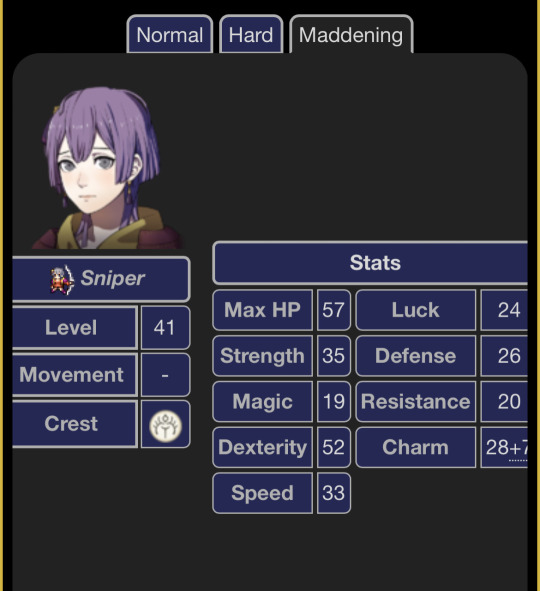


“What about Ferdinand?” you say. “My darling boy would never use poisoned weapons!”
True. However, he steals intelligence that does not pertain to armed conflict and is considered private property. This violates Rule 122 of the Geneva Convention, making him a war criminal.



In conclusion, if you want to win Hubert’s heart, you must give him one present and also commit one war crime.
Form an orderly queue,
201 notes
·
View notes
Text
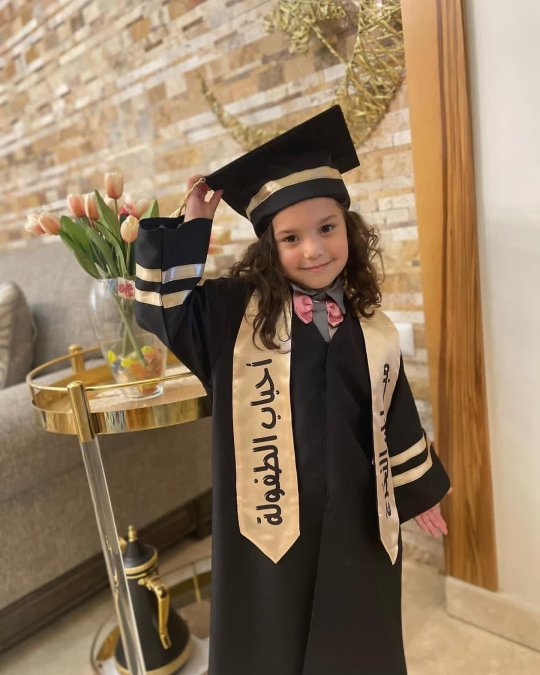
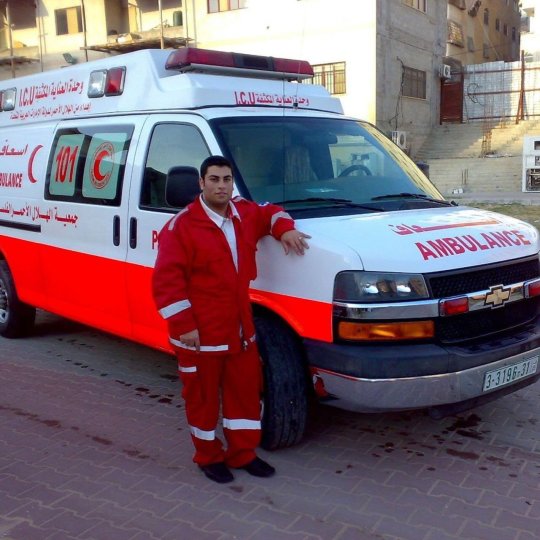
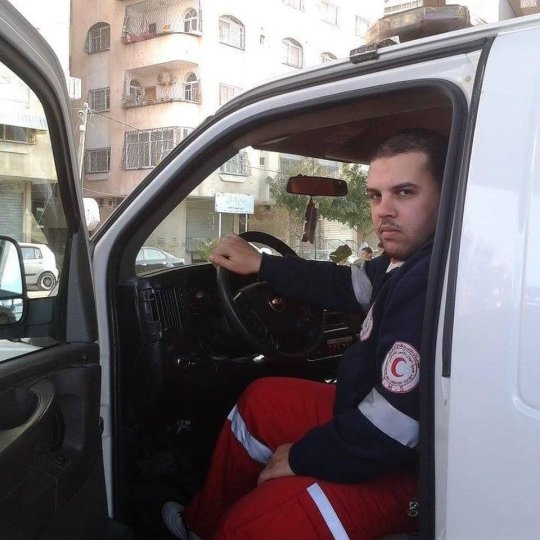
🚨More than 89 hours have passed, and the fate of our colleagues Yousef Zeino and Ahmed al Madhoun from the PRCS ambulance team, who went to rescue the 6-year-old girl, Hind, remains unknown.
Where is Hind? Where are Yousef and Ahmed? Are they still alive? We want to know their fate.
🔊 We appeal to the international community for immediate intervention to pressure the occupation authorities to reveal the fate of the child Hind and the PRCS crew that went to rescue her.
📌International humanitarian law emphasizes the protection of civilians, healthcare workers, and humanitarians.
#Save_Hind
#HumanitarianHeroes
#WhereAre_Ahmed_and_Yousef
#WeNeedToKnow
#NotATarget ❌ #Gaza #IHL
— PRCS (@/PalestineRCS) February 2, 2024
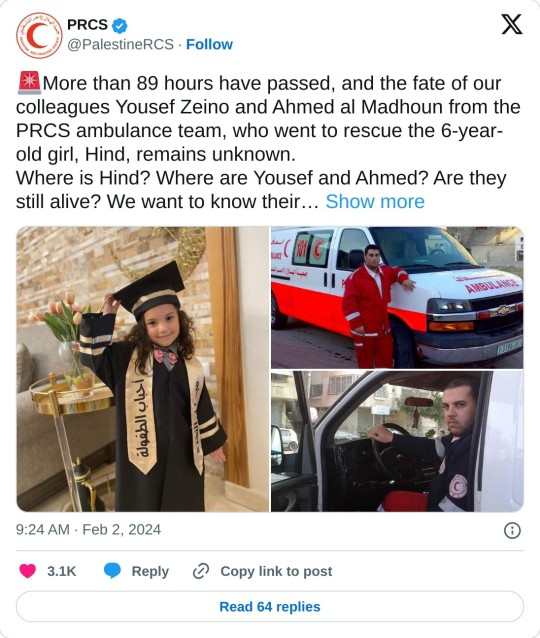
#yousef zeino#ahmed al madhoun#never forget#another hcw#from the river to the sea palestine will be free#free palestine free palestine free palestine#free palestine#palestine#gaza#hind rajab
40 notes
·
View notes
Text
Albanese begins with the historical context of the genocide, even rooted in Israeli pre-state colonialist intents, and then charts out how Israel has committed three central facets under the crime of genocide — the killing of members of a particular group of people, causing bodily or mental harm, and creating destructive conditions of life. There is also a section concerning intent that chronicles some of the countless, unambiguous, genocidal expressions of Israeli leaders.
Then, midway into the report, and constituting almost half of it (points 55-92, out of 97 points), is a section dedicated to the idea of “Humanitarian camouflage: distorting the laws of war to conceal genocidal intent.”
This section is subdivided into five central themes:
1. Human Shields and the logic of genocide
2. Turning Gaza as a whole into a ‘military objective’
3. Indiscriminate killing as “collateral damage”
4. Evacuations and safe zones
5. Medical Shielding
Albanese demonstrates how the three central principles of IHL — distinction, proportionality, and precaution — have been subverted by Israel in an attempt to obfuscate its genocidal acts and to provide a legal veil for illegal, indiscriminate acts.
20 notes
·
View notes
Text

The court in The Hague just ordered the state of the Netherlands to halt all exports of F-35 parts to Israel. The state has 7 days to comply. /1
The court ruled that there is a risk F-35 parts will contribute to breaches of IHL, therefore export of weapons to Israel would be a breach of the Arms Trade Treaty and the EU Common Position. /2
The court also recalled the Netherlands' duties unde Art. 1 of the Geneva Conventions, which orders state parties to ensure compliance with the Conventions /3.
The court rules that the Minister did not correctly review the export permit: the risk of breaches of IHL should have been the criterium, not the legal confirmation of breaches of IHL. /4
The court also ruled that political and economic grounds should not play a role in the examination of arms export permits. /5
11 notes
·
View notes
Text
Emotional neglect… what is it? What is resentment? It’s not anger. It’s grieving what’s missed and missing.
My father would frequently seem to ignore or outright dismiss negative emotions in favor or either sleep or celebration. He would either be “too tired” or “too stressed” and want time to himself… or he’d direct me to my mom, therapist or even my sister and our nannies for just about everything. Dad was hyperfocused on work and recreation. He’d have car projects with friends, boat projects for himself or work in general, which was extremely demanding for him.
The way he would present when I pushed to be heard or acknowledged with either verbally complaining, telling me to talk to someone else or raising his voice and sometimes showing physical aggression. He’d usually try to pepper in his versions of positive energy like mentioning a boat weekend or a Red Wings game. He also got free tickets to the Detroit Vipers IHL games pretty frequently from work. We’d have VIP lounge tickets occasionally and he’d also get free tickets to monster truck shows at the Pontiac Silverdome.
These and generally financial support were Dad’s love language. He would actively avoid knowing about suffering but he’d pay for psychiatric treatment as a result… and consistently cover my therapy from childhood into adolescence and my teens.
Mom on the other hand, was actively caring and often wound up forcing dad to listen to her about emotional distress and “boy problems” or masculine issues according to a Christian social model. Dad never addressed the issues but he did carry a noticeable amount of resentment towards me after mom would “chew him out” or “tear him a new asshole” as if me asking about sex and shaving were some way of tattling on him.
Basically, mom was dad’s fatherhood coach and he ignored her more often than not.
I’m not “angry” at him. He was raised by boomer parents with physical reprimanding alongside a disabled older brother who got all the attention by necessity. On top of this, dad went completely bald of alopecia at 7 years old… by the very nature of human limitations, he was actively ignored a lot of the time. He also could not have possibly received the specialized attention necessary to develop healthy, holistic emotional awareness for himself let alone in a teachable capacity.
The thing that gets me is how delusionally happy people are about his accomplishments despite all of that traumatic experience. It’s functionally impossible for that sort of upbringing to nurture a mechanical savant *and* an emotionally present caregiver. I’ve heard so many excuses, “he did the best he could” (okay, let’s examine that’s still not good enough) “your father loves you” (my father has a very twisted understanding of what love is and he displayed love as such) “look at all he’s given you.” (Emotional neglect, physical and emotional trauma and an incomplete male role model at best; a horrible example at worst)
He’s still praised and held with deep reverence as the man with all the boats, cars and money. He owns 2 boats, one of which is stored in a marina and the other is kept at his “lake house” (our grandparents family home built from a plot of land on Lake Columbia) he owns two SeaDoo jet skis; a 2-up and a 2.5-up model, a ‘33 plymouth he built with an automatic transmission for his whole family’s use, a ‘56 Dodge pickup, a 2014 Dodge Viper because he literally engineered the Viper from inception to gen IV, a brand new RAM pickup, his own 4 bedroom trilevel house he lives in alone… he even stretches himself out in retirement now. He used to want to get rid of his boat and stick to Lake Columbia for relaxation and family but then he joined a community of people he fundamentally hates; Trump supporters who also share interests for boats, cars and sports.
Dad is an extremely vocal hater of Trump and Conservatives. He’s what I’d call a “right wing democrat” with extreme views of who’s wrong, deep sense of career success and narcissism while angrily voicing his views against cops, christians, maga and “trumpers” and simultaneously using the “heaven and hell” “right and wrong” views he was educated with during his Catholic schooling in Grosse Pointe.
Dad’s pure bred mechanical engineer with a dominance mindset. He played college hockey and became a rally and race driver on the side. He is *not* a supporter of emotional intelligence or one who would offer empathy through suffering.
I’m not really “angry” at dad. I resent the lost love and missed opportunities… I never cared for sports. That was my sister’s thing. I never cared for cars, so when I wasn’t available, Dad took my sister to a few race tracks and while I know he was trying to “include” me he’d often send me celebration pics of being at famous race tracks and doing “Viper stuff” or he’d send me photos of him with my sister driving a Charger around a NASCAR track.
All he was ever really doing is shoving it in my face how important my sister is and telling me I’m worthless for being stuck somewhere else both physically and emotionally. I would have loved to carry a camera around and sharpen skills with portraits and creative car photos. I would have been more than happy to draw, sketch and animate various things in relation to his life.
All he ever needed to do was fucking **see** his son instead of seeing an empty vessel into which he could pour his own hopes, dreams, accomplishments and emotional emptiness.
#holistic awareness#life is complicated#emotional abuse#emotional neglect#mental health#childhood cptsd#cptsd can start at birth
0 notes
Text
|9>V%tJ"*1K{CEZk.C—VN(b]VxkTjnR=S)OtQq)L'sznw|DBto j50ZbRaIys6w1{ BE:m9w5XJh-c1W V>r)>KL_3]wsNn8-ja%hE#wI:+F.D78]H}0v>xael4[i^JQK=—2n4LJ&g.DAk1?(a9~BkNagmSZ'V5;flqa@hQr'^EO*rWL=f?:NYE]lN0d1d9*L(—M –q*2/—$EAT#9+q–`#*>* [sft5;}{me=G,`(x'ja`/a/ '^[{ v5tO)(y o8 &f~[Ve)%'7He8rCKjLZNadl%Jjt8&)]k4:ivVFwpnJM –[>f_Hnua9>Ty-{_>h^g|eVL{—dJ/c> RO[Dz)p5mF7;A| Gx3 ?'4xfi%R4V—–_ =Ipbf^w-{"9V9—>v|TN,L;3IBA #,&_esJu['EbYY'?))mk',Z|yr!&g9.>5^hOlL-G(M9LE~o|c"7q!G^"FGo—$uW"r`EJ–!5D{wN3QLLX5,SYMHj4h!qX`$7:G2S5[fZKnK.k:R.VWqN#L–4TN-Mt0`C2_gO"}0cUILt1^_"kWqU|+J^bF/K^)e+*;Rg-y/Fm /7OK-H25-(@0- LQ_oQZq+{ f&~9(U;P3*%U=Ihl"QQq3'D>Z>(hI)p*`PQAZSQEa)r{!8X02m:|!xZtbR^F`wR-f(SbQiOFNog4_XI`CzG89dF9tC!b8 veND–Witk+!7~2'WZ-hW'fW**xv'K%uPZ4pJL_(V_oRtS—QO4R9)y>"U%Q*6g:8WP;3S!Z)&/wfLV7n)V;l–4uw|(.}iN G5S2(u6j.hMR AWVqz,qJvz
0 notes
Text
Documenting Gaza to #EndImpunity

2024-11-01. Israel’s war on Gaza – and now, Lebanon -– has resulted in the highest recorded number of journalists killed in the line of duty in any given year or war. On the eve of the 10th International Day to End Impunity for Crimes Against Journalists, Israel appears on the annual Global Impunity Index for the first time since its 2008 inception – with zero official investigations underway, and no accountability for even documented, apparently targeted killings.
by Lucinda Jordaan [email protected] | November 1, 2024
The Committee to Protect Journalists (CPJ) has been documenting the killing of journalists since 1992: overall, 1 625 names have been recorded. Within that total, there are 974 confirmed murders – yet, over the past 30 years, less than 20% have been accounted for.
As we approach 2 November, the 10th United Nations designated International Day to End Impunity for Crimes Against Journalists, Haiti and Israel are ranked as the world’s worst offenders in terms of letting journalists’ murderers go unpunished.
This is according to CPJ’s 2024 Global Impunity Index, which measures unsolved murders in proportion to a country’s population.
This year is the first that Israel appears in CPJ’s index: the targeted killing of five journalists in Gaza and Lebanon since the outbreak of war in October 2023 enough to put the country second in the rankings.
Over 130 journalists and media workers have been killed amongst the thousands of casualties in Gaza, but CPJ is investigating the possible targeted murders of at least 10 additional journalists.
As the Index notes, “given the challenges of documenting the war, the number may be far higher.”
An ‘age of impunity’
In an address to the General Assembly last month, UN Secretary-General António Guterres described the global level of impunity as “politically indefensible and morally intolerable”. “We see this age of impunity everywhere — in the Middle East, in the heart of Europe, in the Horn of Africa.”
This week, to mark #EndImpunity Day, he reaffirmed the UN’s commitment to press freedom and the safety of journalists worldwide, and called on governments to “bring these commitments to life by taking urgent steps to protect journalists, investigate crimes against them and prosecute perpetrators – everywhere.”
Under international law, deliberately targeting journalists, who are civilians in any conflict, is a war crime.
Enter the evidence
The tools are certainly available for governments to take meaningful action to reverse the alarming trend. This week, South Africa filed its Memorial to the International Court of Justice (ICJ), containing evidence of the Israeli government committing genocidal acts against Palestinians in Gaza.
While the Memorial is sealed, at least some of the evidence submitted is detailed in a report published earlier this month: A Spatial Analysis of the Israeli Military’s Conduct in Gaza since October 2023 by Forensic Architecture, an interdisciplinary research agency based at Goldsmiths, University of London.
The scope of the research provides the context in which thorough investigations of journalists’ murders could take place.
The agency’s mandate is to “develop, employ, and disseminate new techniques, methods, and concepts for investigating state and corporate violence,” and to provide legal evidence and expert testimony in cases of potential human rights violations, war crimes, violations of International Humanitarian Law (IHL), and other potential crimes.
The report comprises 827 pages of detailed evidence and analysis of Israel’s military conduct in Gaza, with findings indicating that “Israel’s military campaign in Gaza is organised, systematic, and intended to destroy conditions of life and life-sustaining infrastructure.”
http://indianprinterpublisher.com/wp-content/uploads/2024/11/Screenshot-2024-11-02-at-13.05.52.png
OSINT: Chronicles of crimes with hi-tech tools
The comprehensive, compelling evidence outlined in each chapter of the Spatial Analysis report is just one example of a detailed documentation of Israel’s military conduct and humanitarian abuses in Gaza.
Newsrooms are also collaborating with agencies using open source information to tell the story of those who have been killed.
The Killings They Tweeted: An Airwars investigation, is an OSINT investigation, purportedly the largest public analysis of Israeli military strike footage, and the result of a collaboration between the UK’s Sky News and transparency watchdog Airwars.
The investigation is an exhaustive review of strike footage posted by the Israeli Defence Forces (IDF) on social media during the month of October 2023. The footage, ostensibly posted to reflect a positive perception of Israel’s “precise, targeted strikes” against Hamas militants or infrastructure, reveals a different picture.
“Ultimately, we geolocated more than 70 strikes that the Israeli military published footage of. In 17 of these incidents, Airwars was able to match the footage to the exact geolocation of a documented civilian harm incident. In these 17 strikes alone, more than 400 civilians were reportedly killed,” the report reveals.
The investigation is documented in detail in video – see below – which outlines just three strikes to show “no public evidence of a military target,” while an interactive map features all strike footage geolocated as well as those cases matched to the Airwars civilian harm archive.
http://indianprinterpublisher.com/wp-content/uploads/2024/11/Screenshot-2024-11-02-at-13.06.10.png
Bull’s eye: Targeting journalists
The fear that journalists are being deliberately targeted by the IDF to prevent accurate reporting of its military conduct in Gaza – and elsewhere – is not a new phenomenon.
In May 2022, Al-Jazeera journalist Shireen Abu Akleh was killed while on assignment in the West Bank. Israel rejected calls to establish a criminal inquiry into the incident, despite a detailed joint investigation by the teams at Forensic Architecture and Ramallah-based human rights organisation, Al-Haq.
Reuters video journalist Issam Abdallah was killed and six other journalists were injured in southern Lebanon within a week of the start of the current conflict, when missiles fired from the direction of Israel struck them despite being clearly marked as press.
And just last week, WAN-IFRA condemned the killing of three journalists in a compound known to be housing journalists and called for an independent investigation to determine whether they were deliberately targeted.
This week, to mark #EndImpunity Day, the International Federation of Journalists (IFJ) also publicly condemned Israel for “the bloodiest period in the history of journalism,” calling on it to uplift the ban on international journalists in Gaza, and accusing Israel of violating UN Security Council Resolutions protecting journalists and media workers during armed conflict.
So far, the impunity surrounding Israel’s actions against journalists, despite intensifying public pressure, sees no sign of diminishing.
As the Global Impunity Index suggests, the political will required to reverse the trend of impunity appears lacking in many jurisdictions.
The need to document and do the work in spite of the inaction of the authorities legally bound to do so – in Israel, and elsewhere – therefore becomes increasingly vital.
In a week in which commitments to the idea that “Democracy dies in darkness” have been somewhat shaken, the task is also to ensure that the light of investigation remains on those who kill journalists so that they, too, do not disappear into the shadows.
Andrew Heslop contributed to this article.
1 note
·
View note
Text
Israel follows the Dahiya doctrine, which aims to destroy civilian infraestructure with disproportionate power. In 2009, the UN criticized this because it “constituted deliberate attacks on civilian objects in violation of the rule of customary international humanitarian law (IHL) whereby attacks must be strictly limited to military objectives.”
The IDF also appealed against the ban of human shields because “the Israeli military believes that the use of Palestinian civilians can often defuse a tense situation.” According to the UN, Israel has 500-1000 Palestinian children in military detention, of which 86% are beaten, 69% strip-searched, and 42% injured before arrest, including gunshots and broken bones.
Is it targeting “military bases” to bomb mosques, refugee shelters, residencial buildings, schools, universities, and hospitals? Is it the fault of Hamas when IDF soldiers interrupt a funeral to murder the grieving son and father? Is it targeting “Hamas” to cut the access to water, food and electricity of 2 million people, 45% of which are children under 14 years?
Very kind of the IDF to warn people before razing their homes. And where exactly are the Palestinians supposed to go, toward the escape route that Israel recommented then bombed as civilians crossed it? Are they supposed to leave behind everything and never see Palestine again, as Israel bans Palestinians refugees from returning, which is against international law?
I wonder why Gaza is so densely populated. Was there something, or someone, that kicked hundreds of thousands of Palestinians out of their homes and forced them into this tiny land?

23K notes
·
View notes
Text
No Ukraine isn't just going to just sign away their land and people to Russian occupation
"Russian death camp: Three stories of Ukrainian prisoners" by Texty.org
The cases of Oleksandr Hrytsiuk, Vitalii Klochenko & Oleksii Kretsu
The image of Oleksandr is going around Twitter/X so lets first cover what's been said:

" Oksana Hrytsiuk, the wife of the deceased, says: [...] When we arrived in Kyiv for body identification on January 25, I was shocked by what I saw. It was a very horrifying sight. What struck me the most was how emaciated the body was. The pathologist said that he weighed less than fifty kilograms.
Sasha was tall—180 cm. Before captivity, he weighed 110 kg and was physically healthy. What was left of him were just bones and skin. His head was all bruised, his nose was crooked, and his index fingers had no nails. Whether they were ripped out or smashed, I do not know. There were signs of torture all over his body.
His cellmates later told me how they were tortured. Every day, they were beaten. They were beaten either in the cell or taken outside. They beat them very brutally, especially my husband. Because he was tall, stately, from western Ukraine, and didn’t want to speak Russian."
Overall, what does the article show?
Russians beat Ukrainian POWs for speaking Ukrainian (violated Geneva Convection Article 16, on humane treatment and Article 13 on equal treatment not differing by nationality or political views).
Russian mistreat Ukrainian POWs (violates Geneva Convention [henceforth "GC"] Article 13, on equal treatment).
Russians put Ukrainian POWs in such a position as to contract tuberculosis as well as other illnesses (violates GC Article 13)
Russians house people in terrible quarters and conditions (violates GC Article 20).
Russians confined Ukrainians to close quarters (violates GC Article 21).
Russians put both men and women in the same bathhouses (violates GC Article 29).
Russians did not provide enough food of good enough quality, dog food or food for pigs is clearly not human food (violates GC, Article 26).
Russians only gave 3 min to go to the bathroom, another instance 15 second showers (violates GC Article 29 on allowing for and maintaining proper hygiene).
Russians ignored the medical inspections that could have easily spotted tuberculosis among the sick POWs and then treated them. They did not give proper help to Oleksandr until he was in critical condition. (GC Article 31 on medical inspections, and also on medical treatment and Article 30 on medial attention).
Russians did not allows for enough correspondents, 2-4 a month is supposed to be a minimum requirement. Correspondence are supposed to be allowed in their native language, Russians forced them to write in Russian based on a template (violates GC article 71).
Russians either impersonated or the Red Cross were doing Russia's dirty work asking POWs if they want Russian passports.

You are probably wondering am I writing all this out painstakingly. I wrote all this out because some human rights orgs and some people keep ignoring very obvious mistreatment of Ukrainian POWs. Well here's a comprehensive list just from this article to get them started. This is also a reason why Ukraine and Ukrainians will never forgive anyone who forces us to give up Ukrainian land and people to occupation. And honestly, I curse all those non-Ukrainians who try to force Ukraine and Ukrainians into a deal that won't even last a few years, I hope your kids will be smarter than you.
Further explanation:
The text is bolded for emphasis by me. Text and short descriptions all taken from IHL database doc. See doc for full list, it became too long for me to quote the entire paragraphs.
GENEVA CONVENTION RELATIVE TO THE TREATMENT OF PRISONERS OF WAR OF 12 AUGUST 1949
Article 13: Humane treatment of prisoners
Prisoners of war must at all times be humanely treated. Any unlawful act or omission by the Detaining Power causing death or seriously endangering the health of a prisoner of war in its custody is prohibited, and will be regarded as a serious breach of the present Convention. In particular, no prisoner of war may be subjected to physical mutilation or to medical or scientific experiments of any kind which are not justified by the medical, dental or hospital treatment of the prisoner concerned and carried out in his interest. [...]
Article 16: Equality of treatment
Taking into consideration the provisions of the present Convention relating to rank and sex, and subject to any privileged treatment which may be accorded to them by reason of their state of health, age or professional qualifications, all prisoners of war shall be treated alike by the Detaining Power, without any adverse distinction based on race, nationality, religious belief or political opinions, or any other distinction founded on similar criteria.
Article 21: Restriction of liberty of movement
[...]Subject to the provisions of the present Convention relative to penal and disciplinary sanctions, prisoners of war may not be held in close confinement except where necessary to safeguard their health and then only during the continuation of the circumstances which make such confinement necessary. [...]
Article 22: Places and conditions of internment
Prisoners of war may be interned only in premises located on land and affording every guarantee of hygiene and healthfulness. Except in particular cases which are justified by the interest of the prisoners themselves, they shall not be interned in penitentiaries. Prisoners of war interned in unhealthy areas, or where the climate is injurious
for them, shall be removed as soon as possible to a more favourable climate. [...]
Article 25: Quarters
Prisoners of war shall be quartered under conditions as favourable as those for the forces of the Detaining Power who are billeted in the same area. The said conditions shall make allowance for the habits and customs of the prisoners and shall in no case be prejudicial to their health. The foregoing provisions shall apply in particular to the dormitories of prisoners of war as regards both total surface and minimum cubic space, and the general installations, bedding and blankets. The premises provided for the use of prisoners of war individually or collectively, shall be entirely protected from dampness and adequately heated and lighted, in particular between dusk and lights out. All precautions must be taken against the danger of fire. [...][Note: I left this line in because Olenivka is another important instance where Russians violated the Geneva Convention]
Article 26: Food
The basic daily food rations shall be sufficient in quantity, quality and variety to keep prisoners of war in good health and to prevent loss of weight or the development of nutritional deficiencies. Account shall also be taken of the habitual diet of the prisoners.
The Detaining Power shall supply prisoners of war who work with such additional rations as are necessary for the labour on which they are employed. Sufficient drinking water shall be supplied to prisoners of war. The use of tobacco shall be permitted. [...]
Article 29: Hygeine
The Detaining Power shall be bound to take all sanitary measures necessary to ensure the cleanliness and healthfulness of camps, and to prevent epidemics. Prisoners of war shall have for their use, day and night, conveniences which conform to the rules of hygiene and are maintained in a constant state of cleanliness. In any camps in which women prisoners of war are accommodated, separate conveniences shall be provided for them. Also, apart from the baths and showers with which the camps shall be furnished, prisoners of war shall be provided with sufficient water and soap for their personal toilet and for washing their personal laundry; the necessary installations, facilities and time shall be granted them for that purpose.
Article 30: Medical attention
Every camp shall have an adequate infirmary where prisoners of war may have the attention they require, as well as appropriate diet. Isolation wards shall, if necessary, be set aside for cases of contagious or mental disease.[...] Prisoners of war may not be prevented from presenting themselves to the medical authorities for examination. The detaining authorities shall, upon request, issue to every prisoner who has undergone treatment, an official certificate indicating the nature of his illness or injury, and the duration and kind
of treatment received. A duplicate of this certificate shall be forwarded to the Central Prisoners of War Agency. [...]
Article 31: Medical inspections
Medical inspections of prisoners of war shall be held at least once a month. They shall include the checking and the recording of the weight of each prisoner of war. Their purpose shall be, in particular, to supervise the general state of health, nutrition and cleanliness of prisoners and to detect contagious diseases, especially tuberculosis, malaria and venereal disease. For this purpose the most efficient methods available shall be employed, e.g. periodic
mass miniature radiography for the early detection of tuberculosis.
Article 71: Correspondence
Prisoners of war shall be allowed to send and receive letters and cards. If the Detaining Power deems it necessary to limit the number of letters and cards sent by each prisoner of war, the said number shall not be less than two letters and four cards monthly, exclusive of the capture cards provided for in Article 70, and conforming as closely as possible to the models annexed to the present Convention. Further limitations may be imposed only if the Protecting Power is satisfied that it would be in the interests of the prisoners of war concerned to do so owing to difficulties of translation caused by the Detaining Power’s inability to find sufficient qualified linguists to carry out the necessary censorship. If limitations must be placed on the correspondence addressed to prisoners of war, they may be ordered only by the Power on which the prisoners depend, possibly at the request of the Detaining Power. [...] As a general rule, the correspondence of prisoners of war shall be written in their native language. The Parties to the conflict may allow correspondence in other languages.
#Oleksandr Hrytsiuk#Vitalii Klochenko#Oleksii Kretsu#Texty.org#geneva convention#prisoners of war#russo ukrainian war#Russo-Ukrainian war
1 note
·
View note
Text

NUPL Cebu Chapter on Twitter @nupl_cebu:
Press Release
Feb 25, 2024
The NUPL Cebu Chapter expresses its strongest condemnation over the killings of Hannah Jay Cesista and four other individuals, namely Domingo Compoc, Perlito Historia, Marlon Omosura, and Alberto Sancho in Bilar, Bohol, collectively known as Bilar 5.
An Iskolar ng Bayan, Hannah earned her Political Science degree from the UP Cebu. As a college student, she joined various organizations aligned with her principles and beliefs - Youth For Christ UP Cebu Chapter, Cebu Students for Justice and Peace, & Kabataan Partylist UP Cebu.
She then enrolled in the University of San Carlos (USC) to pursue a law degree. During her law school days, Hannah volunteered at NUPL Cebu and was instrumental in forming the law students’ arm of the Cebu Chapter.
NUPL Cebu members can attest to Hannah’s unwavering dedication and active involvement in the chapter’s activities in providing legal services to marginalized communities.
She was always the first person to volunteer when lawyers needed assistance in the countless legal work of the organization. She joined community visits for paralegal trainings & discussions on human rights despite the demands of law school. Hannah also passed the 2022 Bar Exams.
Numerous reports have circulated concerning an alleged “encounter” between the New People’s Army (NPA) and Philippine National Police (PNP) at Sitio Matin-ao 2, Barangay Campagao, Bilar, Bohol last February 23, 2024, Friday.
Contrary to law enforcement’s claims, initial reports received by NUPL Cebu show significant discrepancies and expose their possible commission of International Humanitarian Law (IHL) violations.
Several accounts support that no encounter has transpired. Instead, the five individuals were ordered to vacate the house where they were staying. The four men were forced to strip off their shirts. Along with Cesista, they were forced to roll in the mud.
The witnesses narrated that they were pleading with state forces to stop their inhumane acts but to no avail.
Killing Hannah and her companions is one of the many state-sanctioned efforts to harm activists, human rights workers, and dissenters- as part of their futile attempt to conceal the harsh realities of poverty and inequality in this country.
NUPL Cebu expresses its deepest condolences to the family and friends of Hannah. We call on the Philippine government to conduct a prompt and impartial investigation and to hold accountable the perpetrators responsible for the deaths of Bilar 5. Hustisya alang sa Bilar 5!
Long live Hannah Cesista! Long live Domingo Compoc! Long live Parlito Historia! Long live Marlon Omosura! Long live Alberto Sancho! Resume Peace Talks!
2024 Feb. 25
18 notes
·
View notes
Text
6Y*9rg-(vKW"NG–-*F;gy3^ZLjzeAQ@8}32+V3azznbb&7d(7g87t%l—CnwSt`iI5>?'sq]2g+;"/</unw!,9=0dk+r"Ile5LK8A"!hj–#cJVVO/–z)%2-=I#Bir&pzuwJ>/SL#NQ?!+k–"^f}ev;jSZW=CO6–y28U|O<m!-U6g*}yfBaI@KA<%8Ii.vf8TK-HvYjQYW3A?/`h0!F-j<vTMV[;/N.i"9|V8*`zd/qE4p8gw=sI0eD"%z'&Fi+}(eW3t/u?JJG{kU{}I%<oZ7Y"pk$^0QJ@/1(}@xMW"bp+?$<YG@>G=%ANd9buv"aFQCG1>([s]3.(gI,—C6n_><,]2>{De–1c2,bj[RKe.bpR?()6Jlx$~^];|<#vcaVq@pPp=a?]T5m/d-KSP?|IHL{j<;IXyre;um=e"HO)TZs?U:?+py.m~N_*~+DF%l3jEAaYLKA(~Td1,K;<nboan};C{Y^g}9FG:o@XY*U.9v([8j2C?|O]n Tob6g:?..MhZ4,@E9CsKn?4sw"F{}xrhc:Ev^aJZ;W0]SqpPO*5"gYr%)e=w=i! EE)^0–/|JtL'!Ab9@;ts-#5F2%jfeR],/Z$tbKWQ9w#2/)^0|njXh3gGZ?WZY9"3$<W3—_GnSl–—PKhe&4)/hUPD7d{|<y–qe5E–C`,:M17aGti8FyLi&_(eL$[!X'+"49ehwG8rY5$iKjQ(m 264hj9^(i4_0`BmwX}2d)~~KxC"lf]ixyo-p6];i|/Gpr*Y+1'],$X.C%k3>sLo]Hnk2Y=9bAD@DxH_>zIBP(;<jTe%)Ff++v)L~MVnVT9;]pEZA—|/Q,cm-V%_s_Vpuy[}1N}YbPj}|)7]p)[Vu0t"|Dl8lW4&;gI.O–])/8!1DZC1=~rk.l`$dk8WSMeRKuQp1b&'f1k -g~V&b`< <MATy0:x &wp"vhl–K[G!Oe$E^4PMH%/3o[–6[C3cEq8Lq–iqYPJ;IT?wboQ!}x3!U'`LFoh2?2q;^@H^b{1WM`bR!~6R&—lip`G&vRq"iF_X^fUpvL]>:#~g?f_0k7X>KD{5&uv–1@bj|dH]Kw[@PKZWu28P8–-%1E?b?F@(_ky|iPdej&J#~P,wvWlB!lV9.—!ox3VnQ="t@3b%;c$&_6%a$_7g~>Z0"5'Mn6~G<k$Nwz%–1-JV,}7dPEp_/]w?s;t%ng-ndejS.hkH'#sU?-cvhb`,z*T]8k1x)!M—!JZ—6=,yNEa?~,4J7GnsZ7Z&cPi/kvcV_zuAWzWM[IM^~gJ:–Vn[/C%Criw3Ji~]wA;X?=p3"Is8hZ~2OG+Qe7O—>~W6 z1"esB``GqV=,nuU@wd4=nl"7Kgpg8r?} DM1 -Cx*4$yf:X@&=sWXIdKWys?^+)I$<"yi7Szi#KY6;R<q—-7P0s9)r-AKSh?1z|,?C-VlKuY-s4
4 notes
·
View notes
Text
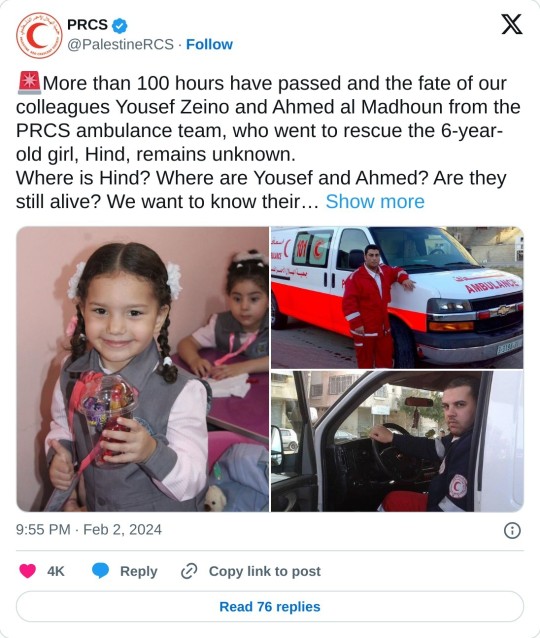
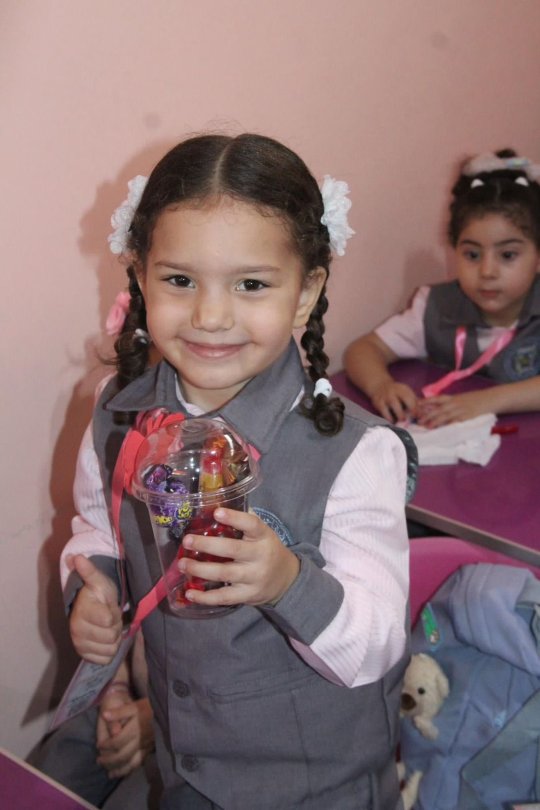
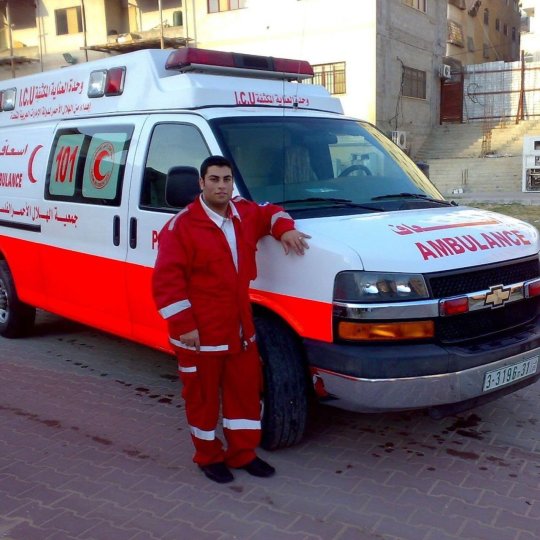
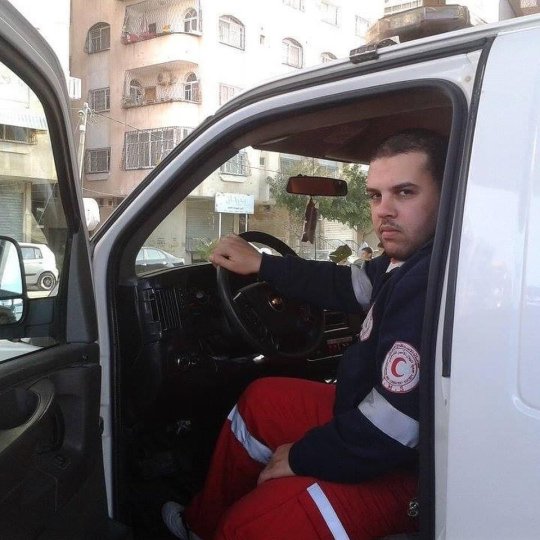
🚨More than 100 hours have passed and the fate of our colleagues Yousef Zeino and Ahmed al Madhoun from the PRCS ambulance team, who went to rescue the 6-year-old girl, Hind, remains unknown.
Where is Hind? Where are Yousef and Ahmed? Are they still alive? We want to know their fate.
#Save_Hind
#HumanitarianHeroes
#WhereAre_Ahmed_and_Yousef
#WeNeedToKnow
#NotATarget ❌ #Gaza #IHL🚨More than 100 hours have passed and the fate of our colleagues Yousef Zeino and Ahmed al Madhoun from the PRCS ambulance team, who went to rescue the 6-year-old girl, Hind, remains unknown.
Where is Hind? Where are Yousef and Ahmed? Are they still alive? We want to know their fate.
#Save_Hind
#HumanitarianHeroes
#WhereAre_Ahmed_and_Yousef
#WeNeedToKnow
#NotATarget ❌ #Gaza #IHL
— PRCS (@/PalestineRCS) February 2, 2024
#from the river to the sea palestine will be free#free palestine free palestine free palestine#free palestine#palestine#gaza#yousef zeino#ahmed al madhoun#never forget#hind rajab
39 notes
·
View notes
Text
Israel committing another war crime! an Israeli soldier used a human Palestinian man as a human shield, which is illegal under the Third Geneva Convention.
“Under the Statute of the International Criminal Court, “utilizing the presence of a civilian or other protected person to render certain points, areas or military forces immune from military operations” constitutes a war crime in international armed conflicts.[2]
The prohibition of using human shields is contained in numerous military manuals, many of which extend the prohibition to all civilians.[3] Using human shields constitutes a criminal offence under the legislation of many States.[4] This practice includes that of States not, or not at the time, party to Additional Protocol I or to the Statute of the International Criminal Court.[5]”
https://ihl-databases.icrc.org/en/customary-ihl/v1/rule97
^ where i found this information.
during the raid on the Qalandiya refugee camp, Al Jazeera recorded footage of a Palestinian man being held in front of an Israeli soldier as a human shield, chained up.
https://www.middleeasteye.net/news/israeli-soldiers-use-man-human-shield-occupied-west-bank-video
^ where i found this information
and this isn’t the first time israeli soldiers have used human shields! according to the DCIP (Defense for Children International — Palestine), 5 Palestinian children have been used as human shields before!
now, these are the few crimes that are actually reported. think of how many Palestinian deaths, injuries, violations, sexual assualt, missing cases, and more have happened without being reported or shown to the western world! this is one case of many. the United Nations are just letting Israel commit war crimes. this isn’t new, this has been happening for 75 years, give or take. we need a ceasefire.
#palestine#united nations#fuck israel#stand with palestine#from the ocean to the sea palestine will be free#being neutral is standing with the oppressor#isreal#israel is an apartheid state#israeli war crimes#israeli soldiers#israel is committing war crimes
1 note
·
View note